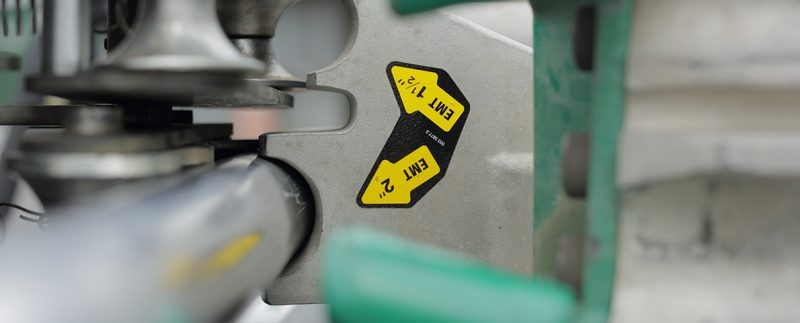PullEase™ from American Conduit makes the steps for pulling electrical wire through conduit easier than ever before. Because of its unique design, you don’t need lubrication. If you commonly encounter resistance, obstructions, or other challenges, you should consider PullEase™. If you haven’t purchased it yet, here are some troubleshooting tips for addressing common issues encountered during wire pulls using conventional conduit.
Assess Conduit Condition
 Before attempting to pull wires, assess the condition of the conduit to identify any potential obstructions, debris, or damage that may impede the pulling process. Inspect the conduit for bends, kinks, or sharp edges that could cause friction or resistance against the wires. Remove any obstacles or debris from the conduit to ensure smooth wire passage.
Before attempting to pull wires, assess the condition of the conduit to identify any potential obstructions, debris, or damage that may impede the pulling process. Inspect the conduit for bends, kinks, or sharp edges that could cause friction or resistance against the wires. Remove any obstacles or debris from the conduit to ensure smooth wire passage.
Check Wire Lubrication
Proper lubrication is essential for reducing friction and easing the wire-pulling process. Ensure that the wires are adequately lubricated using a suitable lubricant or gel. Apply the lubricant generously to the wires and inside the conduit to minimize friction and prevent damage to the conductors. Again, with PullEase™, lubrication isn’t needed.
Use Proper Pulling Equipment
Select the appropriate pulling equipment based on the size, weight, and length of the wires being pulled. Choose pulling grips, swivels, and ropes or tapes rated for the intended load capacity to ensure proper attachment to the wires and conduit. Avoid using excessive force or inappropriate tools that could damage the wires or conduit.
Apply Tension Gradually
Apply tension gradually and evenly to the pulling rope or tape to prevent sudden jerks or jolts that could damage the wires or cause them to become tangled. Use a slow and steady pulling motion, periodically pausing to assess the progress and adjust tension as needed. Avoid overloading the pulling equipment beyond its rated capacity.
Check Pulling Direction
Verify that the pulling direction is aligned with the natural curvature and flow of the conduit to minimize resistance and friction against the wires. Avoid sharp bends, twists, or turns that could cause the wires to bind or jam inside the conduit. Adjust the pulling angle or direction as necessary to ensure smooth wire passage.
Utilize Pulling Aids
Consider using additional pulling aids or accessories, such as pulling socks or conduit rollers, to facilitate the wire-pulling process. These tools can help guide the wires through tight spaces, around obstacles, or over long distances, reducing strain and friction on the wires and conduit.
Address Conduit Blockages
If encountering blockages or restrictions within the conduit, carefully inspect the interior for debris, buildup, or collapsed sections that may hinder the wire pull. Use appropriate tools, such as conduit snakes or brushes, to clear obstructions and restore the integrity of the conduit. Avoid forcing wires through blocked or damaged conduit sections to prevent damage to the conductors.
Verify Wire Size and Conduit Fill
Ensure the wire size is compatible with the conduit size and fill capacity to prevent overloading and excessive friction. Check that the total cross-sectional area of the wires does not exceed the maximum fill capacity of the conduit, as specified by electrical codes and standards. If necessary, consider upgrading to a larger conduit size to accommodate the wires properly.
When you choose PullEase™, you’ll encounter far fewer problems when following the steps for pulling wire through conduit. You can learn more by contacting American Conduit online or calling 1-800-334-6825.

